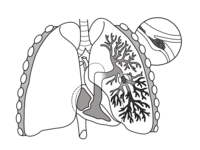
Photo from wikipedia
Posterior circulation stroke (PCS), caused by infarction within the vertebrobasilar arterial system, is a potentially life-threatening condition and accounts for about 20–25% of all ischemic strokes. Diagnosing PCS can be… Click to show full abstract
Posterior circulation stroke (PCS), caused by infarction within the vertebrobasilar arterial system, is a potentially life-threatening condition and accounts for about 20–25% of all ischemic strokes. Diagnosing PCS can be challenging due to the vast area of brain tissue supplied by the posterior circulation and, as a consequence, the wide range of—frequently non-specific—symptoms. Commonly used prehospital stroke scales and triage systems do not adequately represent signs and symptoms of PCS, which may also escape detection by cerebral imaging. All these factors may contribute to causing delay in recognition and diagnosis of PCS in the emergency context. This narrative review approaches the issue of diagnostic error in PCS from different perspectives, including anatomical and demographic considerations as well as pitfalls and problems associated with various stages of prehospital and emergency department assessment. Strategies and approaches to improve speed and accuracy of recognition and early management of PCS are outlined.
Journal Title: Frontiers in Neurology
Year Published: 2021
Link to full text (if available)
Share on Social Media: Sign Up to like & get
recommendations!